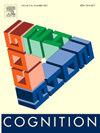自我暗示和心理意象会对社会情绪的感知产生偏差
IF 2.8
1区 心理学
Q1 PSYCHOLOGY, EXPERIMENTAL
引用次数: 0
摘要
调节社会情绪感知的认知过程是心理学和临床研究的关键兴趣。自我暗示和心理意象是这种调节的两个候选过程,然而,它们对社会情绪感知的确切影响尚不确定。在这里,我们调查了自我暗示和心理意象,在适应期间,如何影响面部情绪的后续感知,以及在多大程度上。不同的参与者群体参加了五个实验,在这些实验中,他们要么在心理上肯定(自我暗示;实验1a和1b)或想象(实验2)一张中性的脸会表达一种特定的情绪(快乐或悲伤)。随后的面部情绪感知通过计算主观平等点(pse)沿着快乐-悲伤连续体进行评估。我们的研究结果表明,自我暗示和心理意象都诱导了对期望情绪方向的面部情绪感知的偏见,并且更大的贝叶斯因子支持自我暗示。实验3证实,当情绪词汇与中性面孔一起出现时,反应偏差在驱动这种效应方面的作用有限。最后,实验4通过展示当参与者适应真实的、物理的情绪面孔时的标准对比后效来验证实验设置。总之,我们的研究结果为理解有意认知过程调节社会情绪的潜力,特别是通过偏见情绪面孔感知,提供了初步的一步。在自我暗示和心理意象中观察到的效果大小相当,这两种策略都显示出自我导向干预的希望。它们的实际适用性可能因个体反应、偏好的认知策略和潜在认知机制的潜在重叠而有所不同。本文章由计算机程序翻译,如有差异,请以英文原文为准。
Autosuggestion and mental imagery bias the perception of social emotions
Cognitive processes that modulate social emotion perception are of pivotal interest for psychological and clinical research. Autosuggestion and mental imagery are two candidate processes for such a modulation, however, their precise effects on social emotion perception remain uncertain. Here, we investigated how autosuggestion and mental imagery, employed during an adaptation period, influence the subsequent perception of facial emotions, and to which extent. Separate cohorts of participants took part in five experiments, where they either mentally affirmed (autosuggested; Experiments 1a and 1b) or imagined (Experiment 2) that a neutral face would be expressing a specific emotion (happy or sad). Subsequent facial emotion perception was then assessed by calculating points of subjective equality (PSEs) along a happiness-sadness continuum. Our results show that both autosuggestion and mental imagery induce a bias towards perceiving facial emotions in the direction of the desired emotion, with larger Bayes factors supporting autosuggestion. Experiment 3 confirmed the absence of effects when emotional words were presented together with a neutral face, suggesting a limited role of response bias in driving this effect. Finally, experiment 4 validated the experimental setup by demonstrating standard contrastive aftereffects when participants were adapted to actual, physical emotional faces. Together, our findings provide an initial step towards understanding the potential of intentional cognitive processes to modulate social emotions, specifically by biasing emotional face perception. With comparable effect sizes observed for both autosuggestion and mental imagery, both strategies show promise for self-directed interventions. Their practical applicability may vary due to individual responses, preferred cognitive strategies, and potential overlaps in underlying cognitive mechanisms.
求助全文
通过发布文献求助,成功后即可免费获取论文全文。
去求助
来源期刊

Cognition
PSYCHOLOGY, EXPERIMENTAL-
CiteScore
6.40
自引率
5.90%
发文量
283
期刊介绍:
Cognition is an international journal that publishes theoretical and experimental papers on the study of the mind. It covers a wide variety of subjects concerning all the different aspects of cognition, ranging from biological and experimental studies to formal analysis. Contributions from the fields of psychology, neuroscience, linguistics, computer science, mathematics, ethology and philosophy are welcome in this journal provided that they have some bearing on the functioning of the mind. In addition, the journal serves as a forum for discussion of social and political aspects of cognitive science.
 求助内容:
求助内容: 应助结果提醒方式:
应助结果提醒方式:


